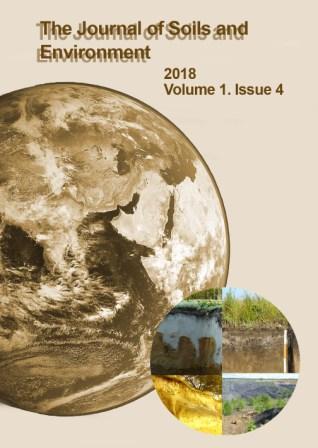Estimate of temperature effect on the decomposition rate of peat-forming plants in a long-term laboratory experiment
DOI:
https://doi.org/10.31251/pos.v1i4.42Keywords:
oligotrophic peat soils, Histosols, СО2 emission rate, Sphagnum fuscum, Chamaedaphne calyculata, Eriophorum vaginatum, hydrothermal conditions, decomposition of organic matterAbstract
The aim of the study. To quantify the effect of the temperature on the decay rate of the modern peat-forming plants of oligotrophic bogs in the southern taiga subzone of Western Siberia in a long-term laboratory experiment.
The study location and time. Samples of the prevalent peat-forming plants (Chamaedaphne calyculata Moench., Eriophorum vaginatum L. and Sphagnum fuscum Klinggr.) were collected on the oligotrophic bog "Bakcharskoye" (Bakcharsky district, Tomsk region, 56°26' N, 84°50' E) in September 2017. To assess the dynamics of the decomposition rate of plant substrates, laboratory experiment was conducted from November 2017 to April 2018.
Methodology. The rate of decomposition (DecR, µg C / g of substrate / hour) of plant substrates of the main peat-forming plants was estimated in the 6-month laboratory experiment by the control of the СО2 emission rate at 2, 12 and 22 °C. Humidity of plant samples corresponded to 90% of their water-holding capacity. Measurements of DecR were taken 3-5 times per week during the 1-st month of the experiment and 1 times per week for the next 5 months. The effect of temperature on the DecR value was estimated using the temperature coefficient Q10.
Main results. The highest СО2 emission rate from all plant samples was recorded at 22 °C in the first 2-3 weeks of the experiment, whereas the maximum values of the СО2 emission at 2 °C rate were observed only 1-2 weeks after the start of incubation of samples. C. calyculata demonstrated the most significant C(CO2) losses for the 6 months of the experiment at 22 °C whereas E. vaginatum - at 12 ° C (21% and 23%of initial C content, respectively). The maximum values of the temperature coefficient Q10 were found for E. vaginatum in the temperature range of 2–12 °C, and for C. сalyculata - in the range of 12–22 °C.
Conclusion. Temperature and type of plant material had a pronounced effect on the dynamics of DecR of prevalent peat-forming plants during the incubation experiment. Excepting E. vaginatum, all plant samples at a moisture of 90% of their water holding capacity were characterized by the highest total losses of С (СО2) during the whole experiment at a temperature of 22 °С. Sphagnum fuscum showed the highest resistance to decomposition. The temperature coefficient Q10 also depended on the type of plant sample and the temperature range for which the measurement was performed.







